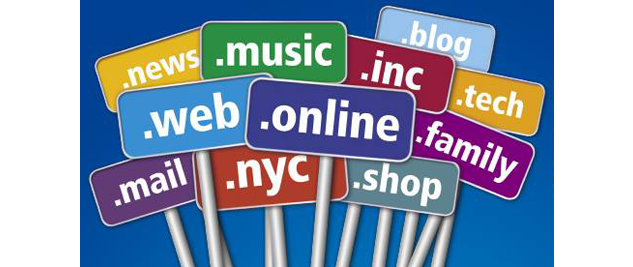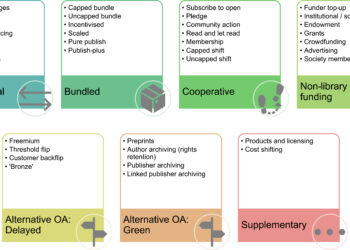 Over the past three years there has been a pioneering spirit among those keen on building real estate in the outer reaches of the Internet and accumulating corresponding riches. ICANN, the organization which coordinates identification of Internet namespace identifiers, announced new rules for expansion and ownership of generic Top Level Domains (TLDs) in 2011, and since then many diverse individuals and companies have attempted to capture a segment of the future Internet world by applying to run these new TLDs.
Over the past three years there has been a pioneering spirit among those keen on building real estate in the outer reaches of the Internet and accumulating corresponding riches. ICANN, the organization which coordinates identification of Internet namespace identifiers, announced new rules for expansion and ownership of generic Top Level Domains (TLDs) in 2011, and since then many diverse individuals and companies have attempted to capture a segment of the future Internet world by applying to run these new TLDs.
More than 400 have already been delegated, signifying vast swaths of new Internet real estate for these digital pioneers. In some cases the ideas for specific TLDs were novel and there wasn’t any competition. However, for some popular generic domains, there was fierce competition: names like “dot-cloud”, “dot-app”, “dot-lawyer” etc. received multiple bids. Google paid more than $18 million simply to apply for some 100+ TLDs, though in light of the subsequent bidding, the final figure to acquire those domains is considerably more than that.
This week, the bidding on the dot-book domain ended with Amazon.com ending up victorious. Reports indicate that Amazon spent roughly $10 million dollars for the rights to this TLD. Interestingly, dot-book attracted a considerable amount of competition, whereas another TLD, dot-author, was awarded to Amazon without any bidding.
The “plumbing” of the Internet is comprised of various technical systems that function together to communicate, share, and direct traffic across the network of connected devices. One of these systems–familiar to anyone who has ever used the web–is the domain naming system, or DNS. This is the system that identifies websites through their URLs, such as scholarlykitchen.sspnet.org. The top-level domains have been, since the early days of the Internet, a somewhat limited and constrained list of short strings that have become common lexicon in our everyday speech today: “.com”, “.org”, “.biz”, in addition to the set of two-letter combinations that are reserved as country-code top-level domains based on the ISO country code standards, ISO 3166, such as “.us”, “.uk”, “.de” and “.ly”. Use of country codes in web domains has become more common as people have begun using them to create words, such as bit.ly or hypothes.is, or create site names with recognizable two-letter acronyms, like ustream.tv or justin.tv.
In 2011, ICANN approved the creation of a much broader set of TLDs that includes more or less any word (in any language, including Chinese, Korean, Russian, or Arabic) after a “dot”. This major opening has led to a wave of new TLDs being proposed to and vetted by ICANN. During the initial window of applications in 2012, more than 1900 applications were submitted. Some 430 have since been approved and over 320 of these are currently functioning, but over the next two and a half years, another thousand or more will also come online.
Several questions surrounding the Amazon acquisition of dot-book should concern the publishing industry. First, does the existence of a dot-book TLD really matter to publishers? The second is should there be concern about Amazon owning this TLD? Finally, what might Amazon do with the dot-book domain? Would any of these things alone make the TLD worth $10 million to purchase?
Who can say how the Internet will develop decades hence. For the first two decades of the Internet’s existence, the value of the country of Tuvalu’s TLD wasn’t understood to be valuable. But by a lucky coincidence in international country codes, Tuvalu was assigned the ISO 3166 code of “TV” and therefore the Internet domain for the country became .tv. Today, this tiny Pacific country, the fourth smallest in the world, derives roughly 6% of the country’s total GDP from licensing the .tv domain name to the world. While this isn’t a big overall dollar amount, it means a lot to the country of Tuvalu.
As the “Internet of Things” develops, one might imagine an interconnected system of hybrid physical and digital objects that uses particular domains for functionality and data interchange. To make this function, individual products might require specific TLDs to distinguish their physical attributes and therefore direct their processing through specialized computational systems and flows. For example, your automobile diagnostics might be processed through the dot-car TLD system, or your home heating systems processed through the dot-HVAC TLD system. Similarly, a dot-book TLD might be specifically configured for managing digital rights, access control or sharing privileges.
I should note that there is no requirement for this type of application today as the Internet is currently configured and “bits are just bits.” However, simply because the network is currently configured in this way, doesn’t mean that changes couldn’t or won’t be made that would impact this. One could envision, for example, if the current Net neutrality structure is abandoned, that audio-visual traffic would be processed differently because of its bandwidth demands, or, in the case of our community, STEM research data might be processed differently for the same reason. Processing specialized data in a dedicated manner might be the most interesting development potential for the dot-book domain. Tied with Amazon’s dominance of the market for trade ebooks, the company might be in a position to build innovative functionality using its TLD and the Kindle infrastructure.
If the network and services begin to develop in this fashion, then publishers certainly should be concerned, since they will be even further detached from the purchasers of their products. It is likely though that books won’t become the first things to be governed in this fashion, since by comparison of revenues, movies and videos are a much larger market and therefore more likely to push the boundaries for rights protection. On the other hand, a small niche controlled by a monopoly provider might be able to be easier to manipulate by a single player who is controlling most of the distribution cards.
Our community has rightly become weary of anything that Amazon does. The company has a reputation for using its market dominance to compete fiercely with other distributors and to squeeze ever-greater concessions out of its suppliers. The recently concluded battle between Hachette and Amazon is just one example of a long history of this tension between publishers and the Seattle-based company. These flare-ups between publishers and distributors are likely to continue as the industry continues to be squeezed by declining margins based on the premise that digital content should necessarily be cheaper. Who knows what control Amazon might exert if the dot-book TLD becomes a recognized discovery path for users to browse, purchase, or interact with books on the Internet?
Might Amazon use the vast store of curated product data it maintains to create a landing page for each publication for which they possess data, so that every title would have a singular “home page” in the dot-book domain? I don’t expect that authors or publishers would appreciate that or accept the legality of it. And yet, in some regards this is already the case, since many online readers often use the Amazon catalog as a discovery tool.
Realistically, the value of this new Internet dot-book “real estate” is not a function solely of its existence, and in many ways the real estate analogy is a false one. There is a constrained amount of physical space, particularly in urban areas. The value of that space “in real life” is a function of how limited it is and how relatively valuable it is compared with other space. As ICANN has updated its rules, there are now nearly no constraints on the amount of “space” on the Internet; in fact ICANN has touted the reduction in the price users have to pay for domains as one of the reasons for this expansion, though this is disputed. Simply because Amazon has snatched up dot-book, there is no reason why someone else couldn’t create dot-ebook, or dot-ebooks, or dot-fiction or dot-bestsellingbook or dot-awardwinningbook or dot-thisisthemostamazingboookyouwilleverread. Those who might also wish to participate in using dot-book could channel their requirements to use dot-author, or dot-published, or dot-library. Perhaps tellingly, Barnes and Noble has owned the book.com domain for years, but has not capitalized on its ownership of that domain name. It has for a long time simply redirected people back to the main B&N homepage. Will anyone else have the vision and resources to carry it through?
Domains are very much like brands and the value of a brand–whatever that brand is–is a function of the work put into nurturing and supporting it. Simply by defining a brand, a person, organization or company isn’t assured it will become a household name, or even one recognized within a tight niche. Developing that niche requires diligence, effort, resources, timing, and even a bit of luck, as with any business activity.
Certainly, Amazon has the resources to make dot-book a significant Internet destination. It also has a strong hold on the ebook market, particularly for trade books, such that it could leverage its position to enforce some rules on the marketplace for ebooks with this dominance. Similarly, the company has a long-term vision for its development future and enjoys the flexibility to focus on a long-term horizon. Amazon also has a reputation for operating quietly and not tipping its hand on strategic investments. If there is a long-term strategy for dot-book and the other TLDs Amazon has acquired, probably few inside the company are certain of it and even fewer outside the company truly understand it either. Perhaps, we won’t know if the investment was worth it until it is too late for publishers to do anything more than be worried about it.
Discussion
2 Thoughts on "Amazon Won the dot-book Top-level Internet Domain: Should Publishers Care?"
The stewardship of a TLD can be revoked, see: https://www.icann.org/resources/pages/delegation-2012-02-25-en
As ICANN has updated its rules, there are now nearly no constraints on the amount of “space” on the Internet
TLDs are not the current metric, IPv4 address space is. The IPv6 transition is going to be neither fast nor pretty.
As for some sort of monolithic revamping of DNS to have enforced data-level semantics (by whom?), I don’t see any relationship to net neutrality. Or reality, for that matter.



